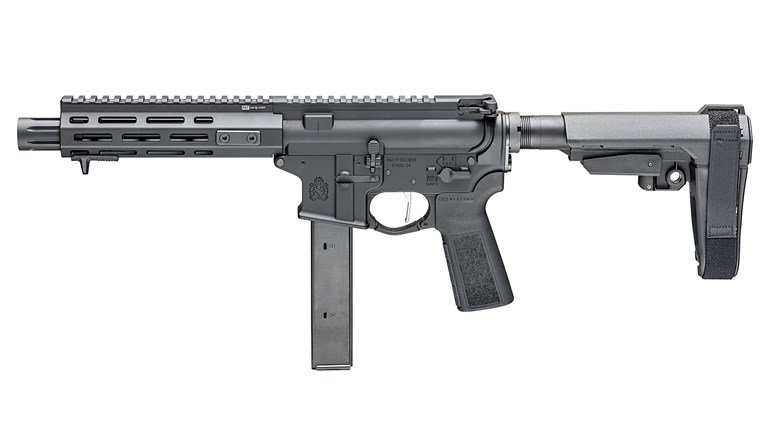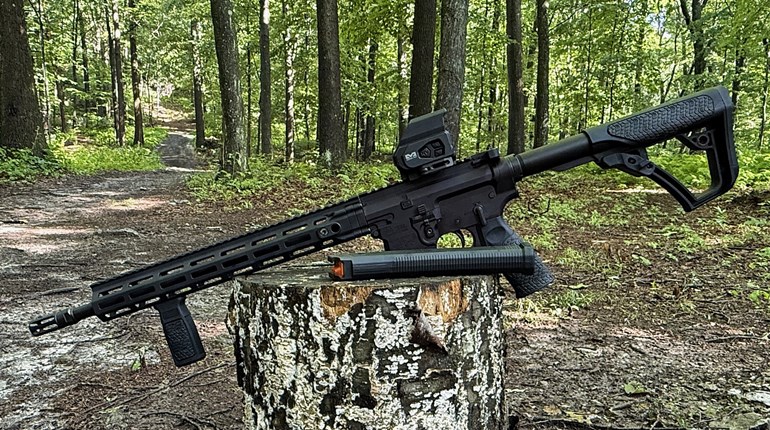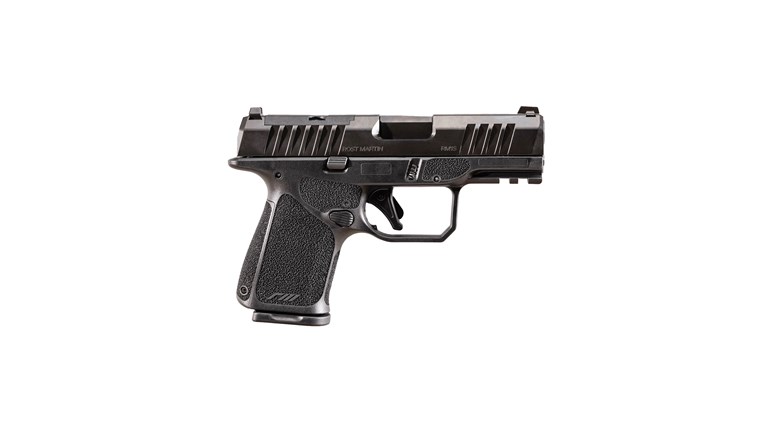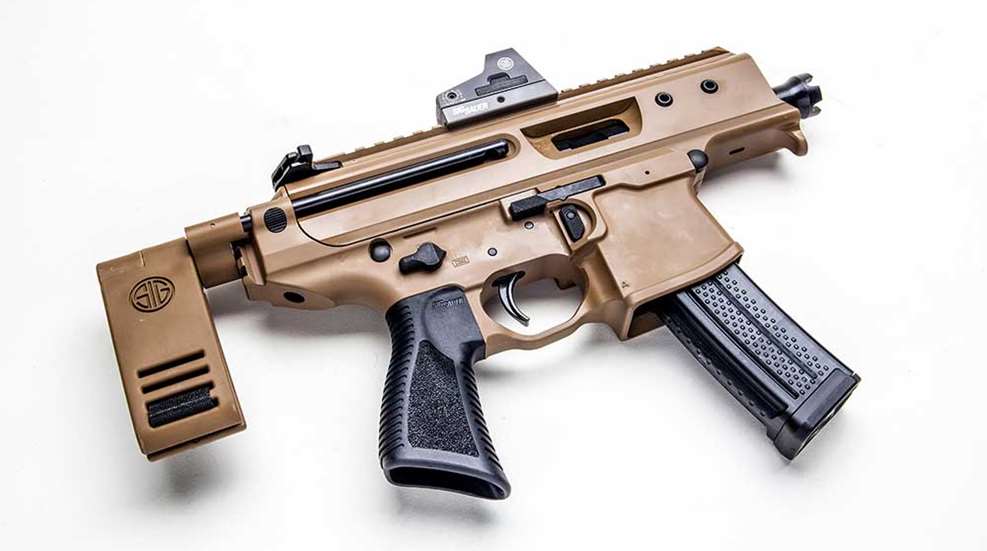
Pistol-caliber carbines dominated the military and law-enforcement landscape for nearly a century as the choice for close-quarters combat. Though submachine guns have fallen out of favor with military users, they still play a useful role in the civilian world. For a number of reasons, we are seeing a resurgence in pistol-caliber platforms, from dedicated carbines to brace-equipped pistols. Among these examples is the SIG Sauer MPX Copperhead, a compact but effective firearm for home defense, vehicle defense, low-recoil training and just plain plinking.
During World War I, small-arms evolution occurred at a breakneck pace. To address the need for soldiers to have a compact but effective firearm for the close confines of trenches and bunker complexes, the submachine gun was born. The subgun remained relevant through World War II thanks to weapons including the U.S. Thompson, the British Sten and the German MP-40. Even after assault rifles such as the M-16 and AKM came on the scene, firearms such as the Heckler & Koch MP-5 remained the “go to” weapon for close-in fighting. Then came the Global War on Terror: soldiers were no longer assaulting hijacked aircraft or besieged embassies, they were fighting in the streets one minute and clearing rooms the next. The MP-5s stayed home, and the more versatile M-4 and its variants became the tool of choice.
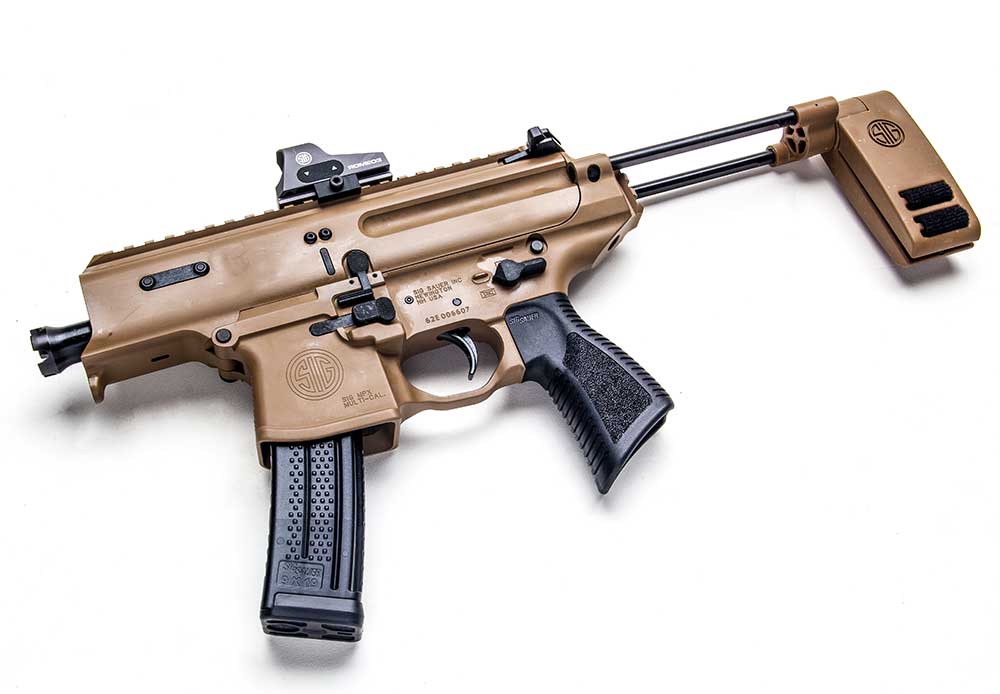
This change absolutely makes sense for military users, but the civilian world is far different. The prospect of legally engaging attackers at hundreds of yards is highly unlikely, to say the least. Most personal-defense shootings are still close-range affairs. There are other factors to consider when choosing a personal-defense firearm that warrant a close look at pistol-caliber firearms. Among them is muzzle blast—firing a 5.56 NATO carbine indoors, especially one with a short barrel, is an overwhelmingly loud event without hearing protection.
I don’t know about you, but when my house alarm goes off at 3 a.m., I’m not looking for my earmuffs. Though firing a 9 mm indoors will certainly cause distress and potentially permanent hearing loss, it is simply less violent to the senses than a rifle cartridge. I know what you are thinking: how about a suppressor? They are fantastic tools for this role, but they cannot be obtained nationwide, and the approval process is longer than some shooters choose to endure.
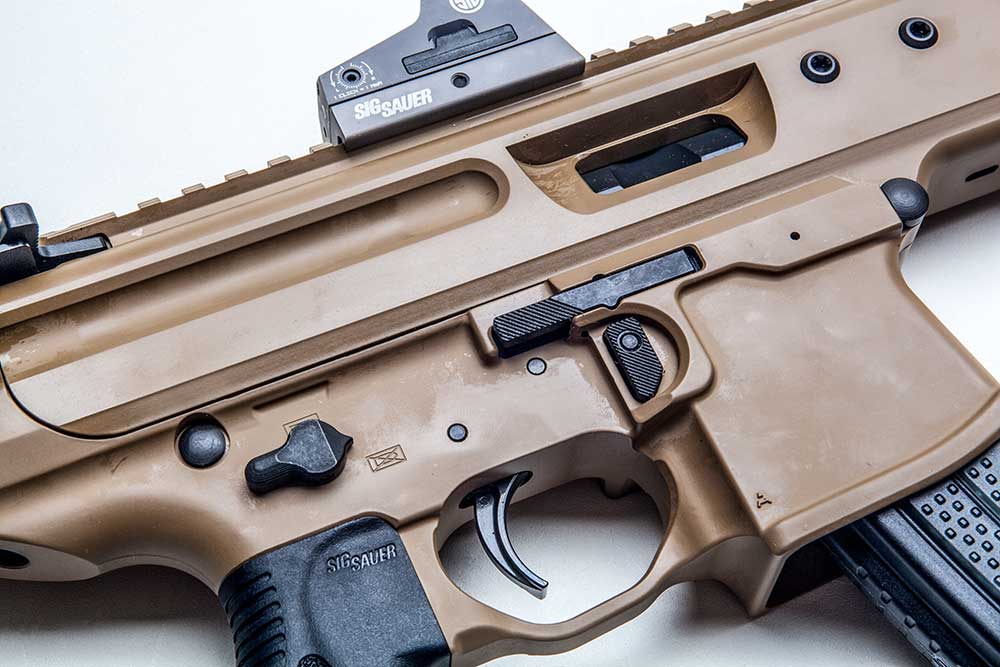
My father is a machine-gun collector, so I had the privilege of shooting a great number of submachine guns during my formative years as a shooter. When the market moved to 5.56 NATO carbines, though, I followed the herd. That was until 5.56 NATO ammunition became expensive and difficult to obtain; I began to look at other options. During this time, I attended the Intermediate/Advanced Handgun training course at Rogers Shooting School in Elijay, GA.
I opted for the optional carbine training that took place in the afternoons, where I quickly reacquainted myself with the 9 mm carbine and its virtues. We used Aimpoint-equipped 9 mm Colt carbines to engage pop-up steel targets at an incredibly fast rate—and we quickly learned to hit them all. The lack of muzzle blast and recoil was immediately apparent and, upon my return, I bought myself a 9 mm AR-15 upper that I use as a low-cost/low-recoil training tool that I use to this day.
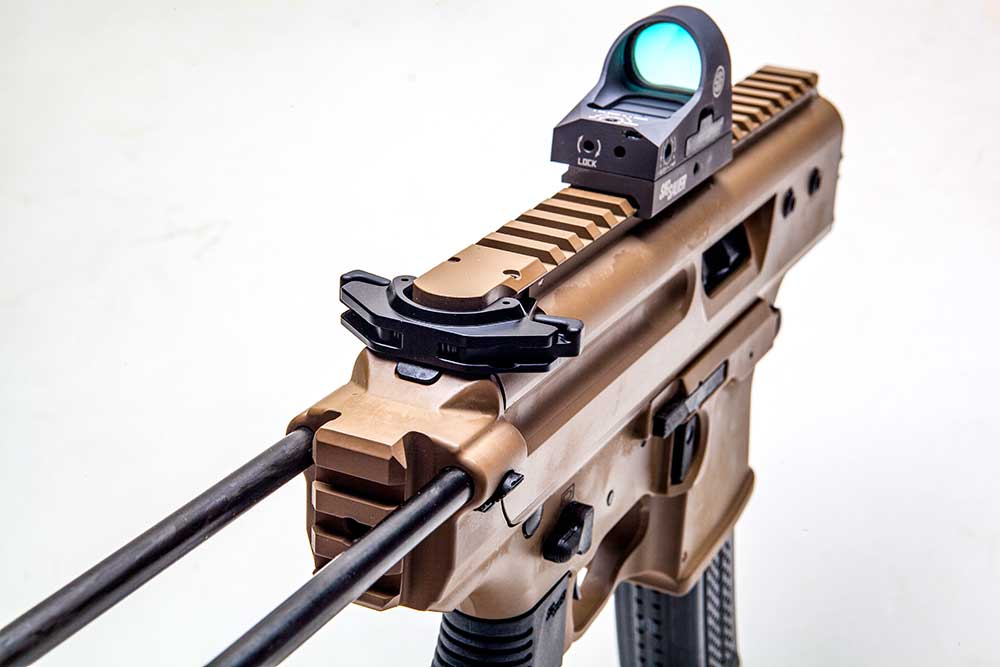
Since that trip to Georgia, companies have begun to introduce pistol-caliber carbines and brace-equipped pistols into the market. One of the best options out there in this category is the SIG MPX series of firearms, which include the Copperhead. The Copperhead is a 9 mm pistol equipped with a telescoping stabilizing brace. The Copperhead is a compact firearm that measures 14.5 inches overall, with a 3.5-inch barrel. It weighs 4.5 pounds.
Though the controls including the safety and bolt catch resemble those on the AR-15, the design departs from that model in several meaningful ways. For starters, the Copperhead uses a short-stroke gas piston to operate the action and, unlike many true submachineguns, fires from a closed-and-locked rotating bolt. The Copperhead uses a two-piece receiver, and the upper and lower are held together by two captive push-pins, just like an AR. Both the upper and lower are constructed of aluminum-alloy forgings and wear a coyote-brown Cerakote finish. The brown is accented by the black finish on the barrel, bolt, controls and grip.
The Copperhead has no integral sights, but an M1913 Picatinny rail runs the length of the receiver to facilitate mounting the optic of your choice. We chose a SIG Romeo3 red dot reflex sight with a 3-MOA dot on our test gun. The stabilizing brace telescopes forward on two steel rails and slides flush with the back of the receiver. A small vertical Picatinny rail section allows for the addition of a substitute brace or, potentially, an MPX accessory stock (which would require registration as an SBR). Depressing a serrated pin on the right side of the receiver releases the brace so that it can be extended to the rear—there are only two positions for the brace: all the way forward or all the way back. The back of the brace is set of hinged polymer wings along with a nylon strap that can be wrapped around the forearm.
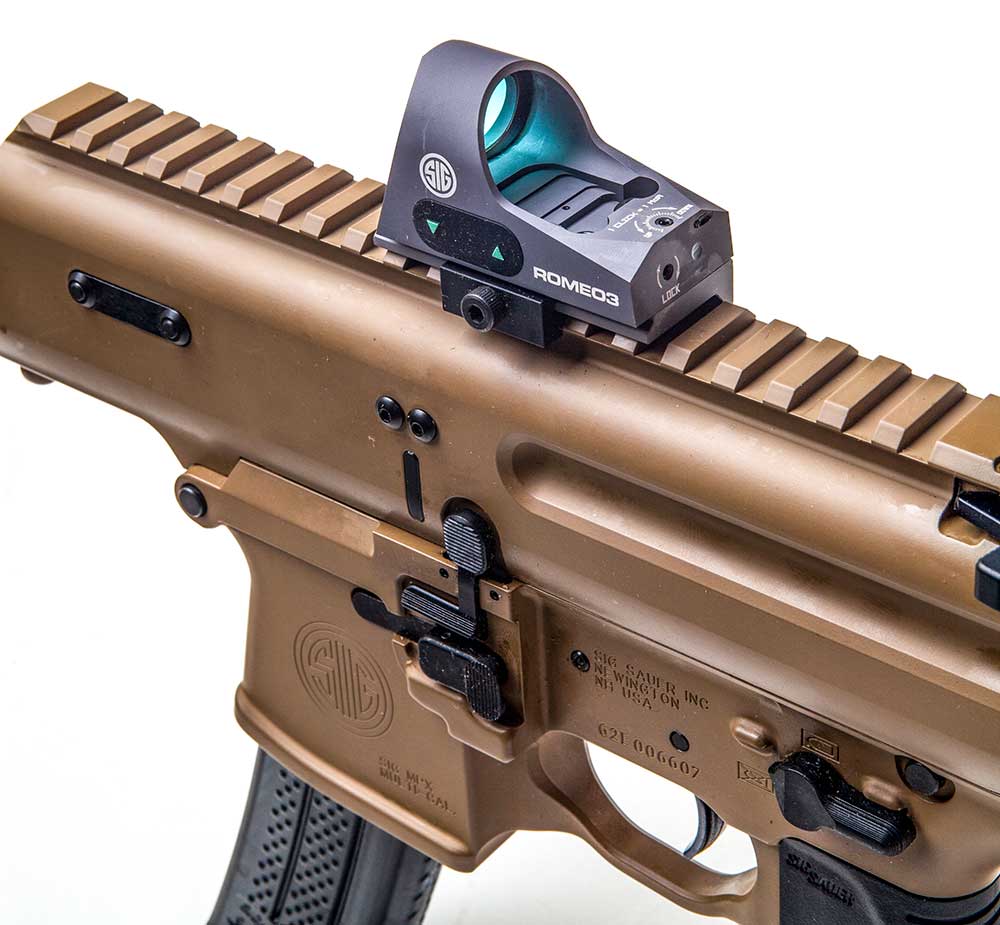
The barrel on the Copperhead is short and extends just over an inch from the face of the monolithic upper. The barrel is black-nitrided with protects against corrosion as well as extends the functional life of the bore, since it hardens the surface. A five-notch flash hider serves as an integral muzzle device. This gun begs for a suppressor, and users interested in mounting one can order a 4.5-inch threaded barrel as an accessory. Changing barrels is as simple as loosening two Torx screws on the right side of the receiver. This also allows for removal of the gas system, which can be cleaned when necessary. The gas system is not adjustable, but works well with a wide variety of 9 mm ammunition. Our only hiccups came with using 158-grain subsonic ammunition, which lies at the extreme end of the cartridge’s spectrum—I’m betting that it would run it fine with a suppressor attached.
From a control standpoint, the Copperhead will be very familiar to any shooter familiar with the AR-15 series. An ambidextrous safety/selector lever is located just above the grip and can be actuated without losing one’s grip on the gun. Both the bolt catch and magazine release are also ambidextrous, giving the user not only the option of firing the Copperhead from either side of the body, but also some flexibility when it comes to personal preference on reloading the gun. Like the other controls, the ambidextrous charging handle that sits just below the M1913 rail is nearly identical in operation to most ARs. Depending on the model, the Copperhead ships with either a 10 or 20-round polymer magazine. Thirty-round magazines are available from SIG’s web store as accessories.
Shooting the Copperhead was, in a word, fun. The combination of the gun’s overall mass and the mild chambering meant that recoil was minimal at worst and muzzle blast was relatively mild. We fired the Copperhead using a variety of FMJ and JHP ammunition, and the only hiccups were with the aforementioned subsonic load. The combination of the red dot Romeo3 and the 7.25-pound single-stage trigger made hits on steel targets an almost mindless task.
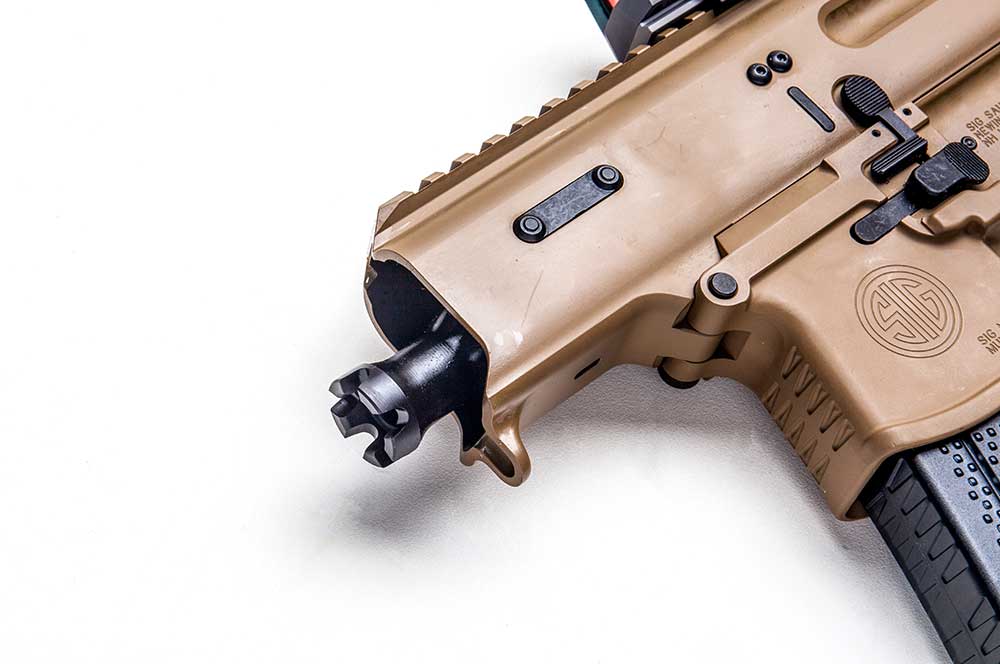
Shooting a 5.56 NATO carbine feels recoil-free until one shoulders a gun such as the Copperhead where the sight never moves from the target. Magazine after magazine went through the gun without issue. It bears mentioning that the fore-end on the Copperhead is very short, and it is possible to get the shooter’s support hand in front of the muzzle if one is careless. SIG built a finger stop into the receiver to counter this, and we simply gripped the magazine well with our support hand to prevent any problems. We did not test this firearm at truly extended ranges but, with the addition of the brace and the sight picture offered by the reflex optic, hits on a 100-yard silhouette were not difficult to achieve with a bit of holdover.
So what is the Copperhead good for? Well, for one, it would make a very useful home-defense firearm. Due to the light recoil and muzzle blast, training a non-enthusiast in its use would be a simple process. The gun’s portability is what sets it apart from the competition, so defensive use outside the home is certainly a possibility. The Copperhead is small enough to fit inside a briefcase or backpack and would provide a significant advantage over a handgun in terms of range and shootability. A bicycle-mounted law-enforcement officer, for example, could stow this firearm in a small pack as a response to an active shooter, bank robbery or other high-risk events.
We are an exciting time in the firearms industry, where manufacturing efficiencies allow for diverse product lines to meet the needs of shooters. SIG has been a major innovator in recent years, and the MPX Copperhead is a great example of the company’s forward-leaning attitude. This compact and capable firearm reinvigorates the role of pistol-caliber platforms in the civilian market.
SIG Sauer MPX Copperhead
Caliber: 9 mm
Barrel Length: 3.5 inches
Weight: 4.5 pounds
Action: Short-stroke gas piston
Twist Rate: 1:10-inch
Barrel Material: Chromoly steel, black nitride finished
Sight: None, M1913 rail for optics mounting
Muzzle Device: Integral flash hider
Handguard: Monolithic
Capacity: 30+1
Buttstock: Two-position pistol-stabilizing brace
Pistol Grip: Polymer
MSRP: $1,835













